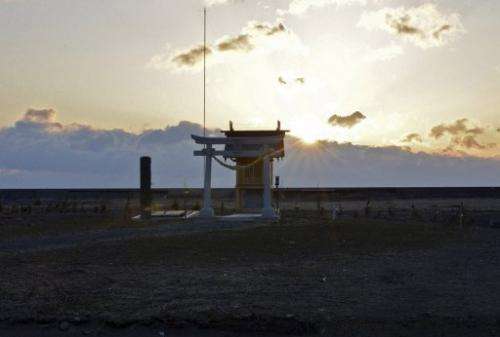Japan's huge quake heard from space by GOCE (Update)

The colossal earthquake that sent a devastating tsunami barreling into Japan two years ago on Monday was so big it could be heard from space, a study has said.
A specially fitted satellite circling the Earth was able to detect the ultra-low frequency sound waves generated by the massive shift in the planet's crust, when the 9.0-magnitude quake struck.
Nearly 19,000 people died because of the towering tsunami it caused, which crushed settlements and swamped the Fukushima Daiichi nuclear plant, sparking meltdowns that displaced tens of thousands of people.
"The atmospheric infrasounds following the great Tohoku earthquake... induced variations of air density and vertical acceleration of the GOCE platform," said a report published in the US-published journal Geophysical Research Letters.
The Gravity Ocean Circulation Explorer (GOCE) is a super-sensitive satellite run by the European Space Agency.
Scientists say earthquakes not only create seismic waves that travel through the planet's interior, but large tremors also cause the surface of the planet to vibrate like a drum. This produces sound waves that travel upwards through the atmosphere.
GOCE is designed to capture and register these signals, acting like an orbital seismologist.
According to the report, the magnitude 9.0 tremor on March 11, 2011 sent a vast ripple through the atmosphere that caused air waves to accelerate.
"These perturbations were due to acoustic waves creating vertical velocities up to 130 metres per second," it said.
The satellite first recorded the signal as it passed over the Pacific Ocean about 30 minutes after the quake and then again 25 minutes later as it moved across Europe.
"Seismologists are particularly excited by this discovery because they were virtually the only Earth scientists without a space-based instrument directly comparable to those deployed on the ground," said Raphael Garcia from the Research Institute in Astrophysics and Planetology in France.
"With this new tool, they can start to look up into space to understand what is going on under their feet."
An official at the Japan Meteorological Agency, the main body that monitors earthquakes in Japan, said it was unusual to be using a satellite for this kind of analysis.
"Generally speaking, earthquakes are monitored using land-based seismographs. Satellites are not used to monitor earthquakes when they strike," he told AFP.
But he said the agency would welcome it if the satellite provided a technical breakthrough to advance the study of earthquakes.
The agency uses some 250 seismographs on land in addition to about three dozen underground units and about 10 seismographs placed on the bottom of the Pacific waters off Japan, he said.
More information: GOCE: the first seismometer in orbit around the Earth, Geophysical Research Letters, doi:10.1002/grl.50205 , 2013 onlinelibrary.wiley.com/doi/10 … 2/grl.50205/abstract
Journal information: Geophysical Research Letters
(c) 2013 AFP



















